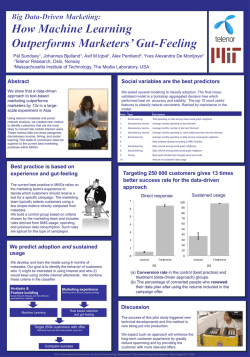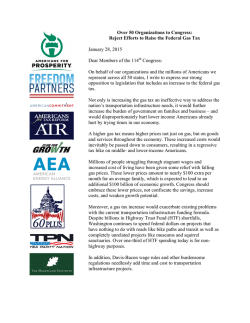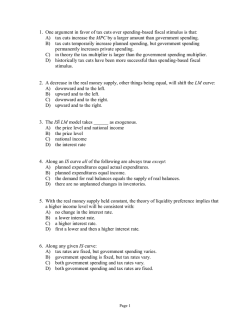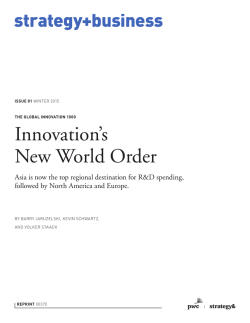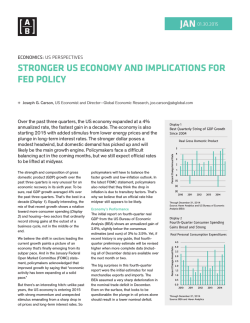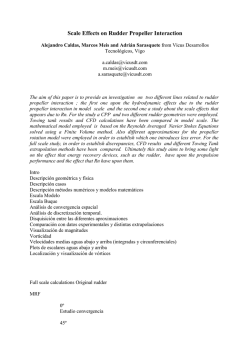
Social Justice: Cultural Origins of a Perspective and a Theory
SUBSCRIBE NOW and Get CRISIS AND LEVIATHAN FREE! Subscribe to The Independent Review and receive your FREE copy of the 25th Anniversary Edition of Crisis and Leviathan: Critical Episodes in the Growth of American Government, by Founding Editor Robert Higgs. The Independent Review is the acclaimed, interdisciplinary journal by the Independent Institute, devoted to the study of political economy and the critical analysis of government policy. Provocative, lucid, and engaging, The Independent Review’s thoroughly researched and peer-reviewed articles cover timely issues in economics, law, history, political science, philosophy, sociology and related fields. Undaunted and uncompromising, The Independent Review is the journal that is pioneering future debate! Student? Educator? Journalist? Business or civic leader? Engaged citizen? This journal is for YOU! see more at: independent.org/tiroffer Subscribe to The Independent Review now and q Receive a free copy of Crisis and Leviathan OR choose one of the following books: The Terrible 10 A Century of Economic Folly By Burton A. Abrams q The Challenge of Liberty Lessons from the Poor Classical Liberalism Today Triumph of the Edited by Robert Higgs Entrepreneurial Spirit and Carl Close Edited by Alvaro Vargas Llosa q q Living Economics Yesterday, Today and Tomorrow By Peter J. Boettke q q YES! Please enroll me with a subscription to The Independent Review for: q Individual Subscription: $28.95 / 1-year (4 issues) q Institutional Subscription: $84.95 / 1-year (4 issues) q Check (via U.S. bank) enclosed, payable to The Independent Institute q VISA q American Express q MasterCard q Discover Card No. Exp. Date Name Telephone No. Organization Title CVC Code Street Address City/State/Zip/Country Signature Email The Independent Institute, 100 Swan Way, Oakland, CA 94621 • 800-927-8733 • Fax: 510-568-6040 prOmO CODE IrA1402 Social Justice Cultural Origins of a Perspective and a Theory F CARL L. BANKSTON III T he term social justice comes up frequently in circles concerned with political and economic policy. Although it is often ill defined, it generally rests on two overriding principles. First, social justice is viewed primarily as a matter of redistributing goods and resources to improve the situations of the disadvantaged. Second, this redistribution is not presented as a matter of compassion or national interest, but as a matter of the rights of the relatively disadvantaged to make claims on the rest of the society. In common usage, the term is rarely taken as expressing a debatable position, but as a statement of a fundamental axiom of value in political and economic life. Of course, some thinkers have given serious consideration to what a just society may be and to whether it makes sense to talk of justice as a quality of entire societies. However, the late philosopher John Rawls is the theorist most closely associated with the term, and his writings are for the most part consistent with the common understanding. Some version of his theory can arguably be found in most uses of the term social justice, even on the lips of those who have never read him (probably the overwhelming majority of social justice advocates). In this article, I argue that a broadly Rawlsian approach to social justice became prevalent in the late twentieth century because it expressed attitudes shaped by two historical experiences: the rise of a massconsumption economy and the adoption of the civil rights movement as a model for Carl L. Bankston III is a professor of sociology and chair of the Department of Sociology at Tulane University. The Independent Review, v. 15, n. 2, Fall 2010, ISSN 1086–1653, Copyright © 2010, pp. 165–178. 165 166 F C A R L L.B A N K S T O N I II thinking about social relations. Rawls’s book A Theory of Justice (1971) was the formal statement of a broad ideological orientation that these two experiences produced. Uncovering the sources of a point of view or concept does not constitute in itself a refutation. All ideas, including my own, arise in historical settings and respond to their settings. Looking at political and economic events and trends to understand social thinking can therefore be similar to examining the larger conversation in which someone makes a point or argument. The reasons for looking at the context that gave rise to the currently prevalent concept of social justice, however, go beyond simply clarifying the term. Besides offering an account of the concept’s origins, I also attempt here to explain how a highly debatable perspective became accepted in many circles as a basic assumption beyond debate. Mass Consumption, Keynesian Economics, and the Redistributive Ethic One of the most notable characteristics of the years following World War II was the dramatic increase in consumption. After the Depression decade and the years of wartime restrictions, the United States entered a period of unprecedented abundance in consumer goods. According to U.S. census data, disposable income per capita in 1950 was $10,210 and personal expenditures per capita $9,424 (in 2009 dollars). Just ten years later, disposable income per capita had risen to $14,499 and personal expenditures per capita to $13,474. By the end of the 1960s, disposable income per capita had shot up to $23,265 and personal expenditures per capita to $21,274 (all figures from U.S. Census Bureau 1970 adjusted to 2009 dollars). This increase in capacity for consumption was an aspect of rapidly growing production. By the early 1950s, the United States was responsible for 45 percent of world manufacturing output and 18 percent of all exports (Frost 1992). By 1958, economist John Kenneth Galbraith was characterizing the United States as an “affluent society.” In this new economy, according to Galbraith, the fundamental issue was no longer how to achieve sufficient production, but how to distribute what was being produced. He argued that the nation was spending too much on private consumption to the detriment of public goods and public interests. Galbraith, later an associate and advisor of President John F. Kennedy, maintained that the production of private consumer goods without government guidance left corporations to pursue profits through advertising to increase demand for luxuries, while roads fell into disrepair and children attended badly maintained schools. This high private consumption also left the poor behind the rest of society. Galbraith proposed steering more investments toward public spending, especially spending for education. The desire to redistribute goods toward the disadvantaged in a society of mass consumption was consistent with a version of Keynesian economic logic. President Kennedy identified the country’s underprivileged segment as an area of increased THE INDEPENDENT REVIEW SOCIAL JUSTICE F 167 attention at the beginning of his own administration. When he took office, the nation had recently passed through recessions in 1957 and 1960 that had slowed the remarkable rate of postwar economic growth. In his February 1961 message to Congress on the economy, Kennedy announced an economic recovery plan that would “sustain consumer spending and increase aggregate demand now when the economy is slack.” Thus, in a key speech that foreshadowed President Lyndon B. Johnson’s War on Poverty, Kennedy explicitly identified boosting demand through government spending, including spending on the poor, as an economic strategy (“President’s Message” 1961). The following year, in his economic message of January 21, 1962, Kennedy announced his own expectation that rising standards of living should erase poverty. “Increasing in our lifetime,” he declared, “American prosperity has been widely shared, and it must continue so. The spread of primary, secondary, and higher education, the wider availability of medical services, and the improved post-war performance of our economy have bettered the economic status of the poorest families and individuals. But prosperity has not wiped out poverty. In 1960, 7 million families and individuals had personal incomes lower than $2,000 [a little more than $14,000 in 2007 dollars]. In part, our failure to overcome poverty is a consequence of our failure to operate the economy at potential” (qtd. in “Goal of Growth” 1962). Kennedy, then, expressed some of the basic themes that began to turn attention in an economy of high consumption toward the economically and socially marginalized. Private spending could preclude economic slowdowns. Because the poor had the least to spend, government could boost economic growth by improving their spending power and by making targeted government investments that would ultimately bring them in from the margins and create full employment. Following Galbraith’s logic, public spending would go toward benefits such as health and training so that human resources could be developed with maximum efficiency. When all were employed and earning incomes, their demand would push the country’s productive capacities to their maximum. Kennedy’s attention to the poor reflected distributional expectations as well as ideas about the relationship between demand and production. In the land of plenty, there should be no shortages for anyone. Not only must prosperity be widely shared, but it must also completely wipe out poverty. Boosting the poor’s ability to consume had both a demand-side economic rationale and a moral force. The corporations that John Kenneth Galbraith saw advertising luxuries were doing so because they needed to keep demand high. According to the widely held demand-side view, the Great Depression had been, at its core, a crisis of overproduction that ultimately ended through war spending. In this perspective, the federal assistance programs of the New Deal era—including the Social Security Act of 1935 and its welfare provisions (Aid to Dependent Children, Aid to the Blind, and Aid to the Disabled) and the National Housing Act of 1934— were at least in part efforts to stimulate the economy by increasing demand. By the postwar period, it had become the common wisdom that spending drove production VOLUME 15, NUMBER 2, FALL 2010 168 F C A R L L.B A N K S T O N I II and that the poor were those who were least able to spend. As demand-side policies became institutionalized in the U.S. economy, putting the least advantaged into jobs and directly subsidizing them to increase their buying power became ways of ensuring that everyone participated fully in a consumption-driven economy. Because the economy could never be judged to be fully “recovered” until it reached a potential of full employment and the eradication of poverty that it never actually attained, the concentration on raising the standards of those at the bottom would become institutionalized in policy. At the same time, the very abundance of life in the United States made it seem shameful that some individuals enjoyed smaller shares of the general prosperity. Not all authorities shared this common wisdom of the mid–twentieth century. Milton Friedman and Anna J. Schwartz (1963), for example, argued that the Depression resulted from a tight monetary policy that exacerbated and prolonged an economic downturn by shrinking the nation’s money supply. Robert Higgs (2004, 2006) has argued more recently that New Deal intervention in the economy did not stimulate an economic recovery, but instead turned a temporary recession into a long depression by creating an uncertainty about property rights that discouraged private investment. Higgs (2006) has argued further that economic recovery did not come from government spending during the war years, but from the revival of private investment following the end of the New Deal and the war. During the late 1950s and early 1960s, though, Galbraith’s version of Keynesian economic policies expressed the dominant perspective. In this perspective, high consumption was the source of prosperity, and government intervention in the economy could push consumption to continually increasing levels. In this land of high consumption, moreover, goods were so widely available that they seemed almost to be part of the natural landscape. Galbraith believed that the problem of production had essentially been solved and that the remaining problem was how to distribute the available goods and services—to determine who gets what. Political agency existed in this view because policymakers could make decisions about whether to direct spending toward private luxuries or public benefits. Economic agency, though, largely disappeared from view as the economy took on the guise of a vast impersonal machine, automatically cranking out supplies in response to aggregate demand. Seen chiefly as consumers, Americans tended to be understood as passive recipients who contributed to the economy mostly by receiving. Official attention turned to those who received the least because they were the ones least able to play the consumer role in boosting demand. The loss of economic agency affected ideas of moral agency. If we think of the economy as an impersonal machine, it makes no sense to say that some people should benefit more than others because some work harder or have greater abilities or more essential skills. Each individual is simply a consumer. The key question for a consumer society is not what people produce or what they may be thought of as deserving for one reason or another, but what people get. Moral values still have relevance, THE INDEPENDENT REVIEW SOCIAL JUSTICE F 169 however. When the expected state of affairs is universal abundance, it appears unfair that anyone should suffer relative deprivation. The consumerist focus on who gets what and the emphasis on relative deprivation coincided with one of the great turning points in the American political imagination. The civil rights movement of the 1950s and 1960s quite literally staged a new social morality play. Civil Rights as an Energizing Myth In the same historical period that the United States became a society of mass consumption, it also brought forth a social movement that transformed how Americans understood relations among people. The term civil right originally meant a citizen’s legal right: a right conferred or recognized by law. The earliest uses of this term seem to date from the 1600s, when civil rights were distinguished from natural rights. The term became a prominent part of the American political vocabulary, however, when Congress passed the Civil Rights Act of 1866. Passed over President Andrew Johnson’s veto, the act declared that all people born in the United States, except for untaxed Indians, are U.S. citizens and hold all of the rights of citizens. This first Civil Rights Act was meant to guarantee to former slaves precisely the rights that had been denied to them on the basis of a categorical identity. Much of the language of the 1866 act was incorporated in the Fourteenth Amendment to the Constitution. By the late nineteenth century, the term civil rights had come to mean not simply citizens’ rights, but citizens’ rights that the government actively protects. The federal government had become identified as the political institution chiefly responsible for guarding civil rights, and black Americans had been identified as a group that specifically required civil rights protection. From the late 1870s through the first half of the twentieth century, the federal government made few attempts to enforce civil rights. Nevertheless, during this period the phrase took on much of its contemporary sense. The idea of a civil right differed from the idea of a civil liberty because the latter implied freedom from regulation, usually by government, whereas the former implied protection by a regulatory body, usually government. Civil liberties were held by each individual citizen. Civil rights were held by individuals, but they were threatened on the basis of group identity and therefore required protection on the basis of group identity. Civil rights more concretely had a close historical connection with the experience of African Americans, who had the collective background of race-based slavery followed by decades of race-based discrimination. Throughout the early twentieth century, activists and organizations attempted to turn government away from promoting racial discrimination and put it back in the protective role the federal government had adopted at the beginning of Reconstruction. However, the modern civil rights movement arose in the wake of World War II, which had developed an increasing awareness of enforced inequality among African Americans and fueled their struggle for racial equality and full inclusion in American society. VOLUME 15, NUMBER 2, FALL 2010 170 F C A R L L.B A N K S T O N I II Georges Sorel argued in his classic work Re´flexions sur la violence (1912) that social movements require an energizing myth to create group solidarity and to give meaning to collective action. A highly successful myth can move beyond a movement’s adherents and become part of a larger culture. By “myth,” I do not mean a false or illusory account, but a narrative with enough moral and emotional force to give clarity and inspiration to an account of events. The largely nonviolent civil rights movement worked so well as moral drama in part because of the violence with which it was met and in part because the vision of an oppressed people struggling for freedom evoked themes of existing American cultural narratives. In response to the Brown decisions of 1954 and 1955, Robert D. Patterson, a plantation manager in the Mississippi Delta, founded the Citizens’ Council of America in order to prevent the desegregation of schools. The council rapidly spread throughout the South, gaining a total membership of three hundred thousand. In Congress, Senator Harry F. Byrd of Virginia led a group of nineteen U.S. senators and eighty-one representatives, all from the states of the old Confederacy, in issuing a declaration condemning the Brown decision. In 1955 also, the young minister Dr. Martin Luther King Jr. led a boycott of the Montgomery bus system to protest segregation in public transportation. This successful boycott fostered similar activities throughout the South. In 1960, college students took seats at a lunch counter at a Woolworth’s variety store in Greensboro, North Carolina, and refused to leave until served. The lunch counter sit-in movement quickly spread to other cities in the South, followed by “Freedom Rides” to desegregate interstate transportation in the South and by voter-registration drives. Violent responses heightened the movement’s drama. In Mississippi, a sniper murdered activist Medgar Evers in 1963. Mississippi’s resistance made it a national center of attention. In 1964, white and black college students traveled to Mississippi for the Summer Freedom Project, which involved establishing black schools and helping Mississippi blacks register to vote. Mississippi provoked national outrage when three of these young people, two white and one black, were murdered. In the same year, angry Mississippi whites burned thirty black homes and thirty-five black churches. A voter-registration drive in Alabama in 1965 created further national outrage. To dramatize the movement in Alabama, King planned a march from Selma to Montgomery, the state capital. Governor George Wallace refused to give the march a permit, and the marchers were savagely attacked by state troopers and a sheriff department’s force. Identifiable heroes and villains provide one of the plot elements of a successful moral drama. A single representative hero provides another, and the drama works even better if that single representative hero makes the ultimate sacrifice, martyrdom for the cause. The movement’s drama reached a climax in the 1963 march on Washington. In August, more than two hundred thousand marchers from all over the United States gathered in the capital to demand immediate equality in political rights, THE INDEPENDENT REVIEW SOCIAL JUSTICE F 171 employment, and other areas. There, King gave his most memorable speech in biblical cadences that evoked images from the Judeo-Christian tradition and from the American national mythology. Five years later, on April 4, 1968, King became the developing narrative’s martyr when an assassin’s bullet struck him down in Memphis, Tennessee, where he had gone to support black sanitation workers’ demands for better working conditions. The civil rights movement of the 1950s and 1960s was, above all else, a televised drama. The same economy of mass consumption that had emphasized the distribution of goods and services as the fundamental characteristic of economic life also distributed one particularly critical good, the television, to almost every home. Television supported itself as a means of advertising, but it had a cultural force beyond stimulating desires for products. It became a medium for presenting local civil rights struggles to the nation as a whole. The civil rights movement worked a deep change in Americans’ social vision. It became a way in which people began to think of themselves as members of categories requiring protection. The National Indian Youth Council and the American Indian Movement began to stage protests against discrimination and white domination in the late 1960s and early 1970s. Among Hispanics, organizations such as the United Farm Workers, the Raza Unida Party, the Alianza Hispano-Americana, and the Brown Berets began to organize and assert themselves. The women’s movement had a long history in the United States. However, it began to take on new energy after the civil rights movement, and many people began to draw parallels between women’s social and economic situation and ethnic and racial minorities’ situations. People who were sexually and emotionally attracted to same-sex partners began to see their sexuality as a civil rights issue in the wake of the civil rights movement. Gay activists sought antidiscrimination legislation and other forms of civil rights protection. An estimated three hundred thousand people attended a 1993 march on Washington in support of gay and lesbian rights. Disability also became a civil rights matter. The Rehabilitation Act of 1973 and the Education for All Handicapped Children Act of 1975 required businesses and schools receiving government funds to follow government guidelines, including affirmative-action guidelines, in hiring or admitting disabled workers or students. Under pressure from activists, Congress passed the Americans with Disabilities Act of 1990, which requires businesses and public spaces to change or remove features of architecture or transportation that present barriers to the disabled. The power of the civil rights movement as a moral narrative in the mass media made it a model for thinking about social relations in general, moving it beyond the quest for equality for African Americans. By the late twentieth century, the retelling of the story of the struggle against Jim Crow and segregation had become a standard theme on small and large screens, presented as the modern morality play, with the lines between the virtues of the oppressed and the wrongs of the oppressors always clearly drawn. Statistical inequalities between races still existed, although substantial VOLUME 15, NUMBER 2, FALL 2010 172 F C A R L L.B A N K S T O N I II upward mobility by minority-group members had occurred, yet the image of oppressed categories of people had emerged as one of the shaping concepts of the national consciousness. The energizing myth of victimized people’s struggle animated the redistributive ethic of a society of mass consumption. According to this ethic, victims, such as lowincome consumers, owe their special status to deprivation. This special status calls for political intervention in order to compensate for deprivation and to redistribute power or opportunities. Whenever certain people enjoy a smaller portion of a society’s benefits than others, a generalized civil rights view of the world presents this difference as a consequence of oppression, making relative deprivation a claim to acquire greater benefits as a right. Although social myths are useful for creating solidarity and motivation, they do pose problems as ways of understanding the human environment. First, myths obscure the differences among events and situations. Seeing disabilities or variations in sexuality according to the civil rights model minimizes the differences between these aspects of the human condition and the historical experience of African Americans. Second, social myths oversimplify our institutions and relations by dramatizing them as sharply drawn stories of good and evil. This moral simplification not only reduces social theory to caricature but also invests political positions (such as redistributive arguments) with automatic virtue. Third, a widely accepted social myth imposes a template on thinking that discourages alternative views or the examination of assumptions. In particular, the civil rights myth discourages approaching questions of political economy as matters of competing interest groups or as matters of overall national interest. Instead, it answers these kinds of questions with assertions of irreducible rights. Social Justice as Formal Theory Every theory of social life is itself a part of its social setting.1 This fact is especially notable for ethical or moral theories, which are concerned with issues of what should be done. Formal theories of social values are derived from broader moral perspectives. 1. The question of the extent to which social theories are products of their social settings is a matter of some debate in the sociology of knowledge. In a discussion of ideological change, Higgs (2008) has argued that some thinkers, such as Karl Marx, have portrayed social thought as driven purely by events. In the event-driven view, ideas about society are determined by social relations and by the social positions of those who hold the ideas. Others, such as F.A. Hayek and Ludwig von Mises, have rejected this deterministic perspective. In their theory-driven approach, creative and original thinkers can stand outside of social influences and develop ideas that shape public ideology. Offering a middle way, Higgs maintains that the people’s thoughts are not reducible to positions or relations in a social structure; instead, thinking responds to concrete experiences of life. Because there are always competing ideologies, views of social life tend to be accepted when they are consistent with experiences. Thus, people tend to adopt a belief system because it accords with their experiences in a social structure. I take it that some variation of this middle approach is essential to any sociology of knowledge. The deterministic event-driven argument would deprive reflections on the social sources of ideas of any claim to truth. An exclusively theory-driven argument would place ideas (or at least some individuals’ ideas) entirely outside of sociological analysis. THE INDEPENDENT REVIEW SOCIAL JUSTICE F 173 Here, I argue that the dominant formal theory of social justice, expressed by Rawls, derives from cultural perspectives shaped by the society of mass consumption and by the heritage of the civil rights movement. Rawls published his central and most influential work, A Theory of Justice, in 1971. He begins the book with the idea of justice as fairness, identifying the basic structure of society as the primary subject of justice and identifying justice as the first virtue of social institutions. By taking this approach, he views justice as a matter of a society’s organization and internal divisions. Hence, the main idea of a theory of justice is what kind of organization of society rational persons would choose if they were in an initial position of independence and equality and setting up a system of cooperation—a hypothetical original position in which no one knows what place he or she will occupy in the society being created. After considering the main characteristics of justice as fairness and the theoretical superiority of this approach to utilitarianism, intuitionism, or other perspectives, Rawls considers the principles of justice. He identifies two such principles: that each person should have equal rights to the most extensive liberties consistent with other people’s enjoying the same liberties and that inequalities should be arranged so that they will be to everyone’s advantage and so that no one will be blocked from occupying any position. From these two principles, Rawls derives an egalitarian conception of justice that will allow the inequality of conditions implied by equality of opportunity but will give more attention to those born with fewer assets and in less favorable social positions. This thinking leads Rawls to the idea of the original position outside of society. The hypothetical original position can be approximated by using the thought experiment of the veil of ignorance. If no one knows what place he or she will occupy in the society being formed, what societal arrangement will rational persons choose? Rawls maintains that they will choose the social structure that best benefits the unknowing chooser if he happens to end up in the least desirable position. A Theory of Justice and the program of distributive justice have inspired criticism over the years. One of the earliest major responses to the book came from Rawls’s Harvard colleague philosopher Robert Nozick. In Anarchy, State, and Utopia (1974), Nozick offers a libertarian response. The assumptions beneath A Theory of Justice are essentially redistributive: the author posits equal distribution of resources as the desirable state and then argues that inequality can be justified only by benefits for the least advantaged. Nozick argues, however, that people produce all resources, and they have rights to the things they produce. Thus, attempts to improve the condition of the least advantaged through redistribution are unjust because they make some people work involuntarily for others and deprive people of the goods and opportunities they have created by expending their own time and efforts. Two years after the publication of Nozick’s book, F. A. Hayek offered his own libertarian objection to redistributive social justice in volume 2 of Law, Legislation, and Liberty, titled The Mirage of Social Justice (1976). Hayek argues that social justice VOLUME 15, NUMBER 2, FALL 2010 174 F C A R L L.B A N K S T O N I II is essentially an excuse for the exercise of power. He maintains that when individuals are free to pursue their own ends, the idea of social justice is meaningless. It has meaning, he proposes, only when a government or army has power to enforce its own distributional preferences. Nozick and Hayek notwithstanding, most critics have objected to specific aspects of Rawlsian distributive justice rather than to the idea itself. Michael Sandel argues in his 1982 book Liberalism and the Limits of Justice that Rawls presents a version of social justice that is essentially stripped of all social elements. Rawls, in Sandel’s view, errs in considering human beings apart from all the ideals that may constitute purpose and morality as well as from all social ties among human beings. Amartya Sen (2009) has more recently argued that the veil of ignorance presents an overly abstract approach to the just society, maintaining instead that judgments need to be based on comparisons of social arrangements to make decisions about what is more or less just. In response to criticisms during his lifetime, Rawls published two revisions of A Theory of Justice (1975, 1999). He also elaborated and refined his arguments in Justice as Fairness: A Restatement (2001). As the title of the latter work indicates, though, it was an extension of the 1971 work, and he never changed the main outline of his ideas about fairness. Although not everyone accepts A Theory of Justice as the gospel according to John, it became and has remained the standard text to which all those thinking about the just society respond. Moreover, if one looks at the various centers for social justice, programs for teaching social justice, and agendas of social justice advocates, one can clearly see that the conclusions Rawls reached are being repeated again and again. Social justice is concerned with those in the least desirable positions: disadvantage is a consequence of social structure, and the just way to proceed is by political action aimed at benefiting those at the bottom through the redistribution of goods, opportunities, and power. Thus, the National Association of Social Workers states that “social justice is the view that everyone deserves equal economic, political and social rights and opportunities. Social workers aim to open the doors of access and opportunity for everyone, particularly those in greatest need” (2010). Among intellectuals specifically concerned with social philosophy, A Theory of Justice became the basis for talking about what is just because it expressed the dominant values of its time in a coherent intellectual form. Activists, social workers, and policymakers may have absorbed only secondhand versions of Rawls; some may never have heard of him. Nevertheless, social justice advocates in general sound quite Rawlsian because the Harvard philosopher offered an elite distillation of the preconceptions of a consumer society energized by a vision derived from civil rights. Prior to the late twentieth century, a concept of justice not based on individual merit or individual actions would have seemed incomprehensible. But the view that justice requires ignoring individual merit is entirely consistent with thinking about human beings fundamentally as units of consumption. In such a scheme, what is fair THE INDEPENDENT REVIEW SOCIAL JUSTICE F 175 or unfair, right or wrong, is not what people do, but how the structure of distribution is organized. Rawls’s writings contain hints that some types of social and economic organization may be more productive than others. Thus, he is willing to accept inequality to the extent that it makes the least privileged as well off as possible. For the most part, however, A Theory of Justice is concerned almost entirely with distribution and seems to assume the availability of abundant goods and services to be distributed. The goods, services, and work relations that the occupants of the theoretical original state consider when deciding on the best society are simply there, and social justice is distributive justice. The Rawlsian perspective is, in other words, a consumer orientation toward fairness. The fact that those at the bottom become the most important players in the thought experiment follows from that orientation. The theoretical formulation of social justice derived from social justice as a cultural perspective, and consistency with cultural orientations promoted acceptance of the theory. In simple terms, the Rawlsian approach to social justice told many people what they were ready to hear. Describing the just society as a form of organization that is chosen rather than the dynamic result of continuous interactions among human beings fit in well with the grand planning orientation of economic and political policymakers in the late twentieth century and with the ambitions of civil rights activists to go beyond striking down discriminatory laws and to create a more equal society. One of the interesting gaps between the perspective and the theory concerns social categories. In the broader parlance, the quest for the just society is largely a matter of redistribution among categories of people, most notably the holy trinity of categories known as “race,” “class,” and “gender.” Rawls’s representative text makes relatively little mention of categories. The veil of ignorance would seem to blind even decision makers about the just society to the existence and nature of social distinctions. Nevertheless, by removing knowledge of which individuals occupy the bottom spots in a social order and knowledge of anything individuals may have done to place themselves in those spots, A Theory of Justice makes relative advantage or disadvantage purely a matter of structural positions. Seeing people as positions rather than as individuals implicitly reduces them to categories. The emphasis on relative advantage lends itself to understanding these categories as defined by victimization or oppression (that is, as matters of race, class, and gender). Rethinking Assumptions Social justice is a difficult topic. On the one hand, its advocates advance it as if it were a clear and well-founded set of principles or program of action. On the other hand, it is often used as a vague slogan or rallying cry. In the foregoing discussion, I have tried to provide some understanding of the term’s consistent meanings and cultural origins. I have suggested that we can comprehend it as a broad perspective and as a VOLUME 15, NUMBER 2, FALL 2010 176 F C A R L L.B A N K S T O N I II theoretical formulation. I have proposed taking A Theory of Justice by John Rawls as presenting the fundamental theoretical formulation because it has provided the basis for philosophical discussions of social justice (including discussions that dispute or modify Rawls) and because it echoes the main assumptions of the broad perspective. I have traced these assumptions to two currents in modern history: the rise of the economy of mass consumption and the moral drama of the civil rights movement. Part of the motivation for this article was a desire to achieve greater understanding of this difficult topic by examining its historical context. Another part of the motivation, though, was a need to look at the origins of social justice advocates’ assumptions and commitments in order to suggest how cultural influences may have limited and directed approaches to political and economic policies. Recognizing that dedication to the perspective has come out of genuine struggles in the recent American past can help one to appreciate the depth and sincerity of this dedication. When, for example, the nation’s preeminent teachers college identifies its teacher education candidates as “advocates of social justice and diversity” (Teachers College Columbia University 2010), it is not only making an institutional call for ideological conformity, but also taking a stand on social morality. By the same token, however, this sincere stand imposes a social morality; it calls us to consider both why some perceive the need to impose a perspective and the significance of the imposition. When we assume that goods, opportunities, and power are simply there to be distributed to passive consumers, we lose sight of the fact that all aspects of political and economic life must be produced. People are actors, not simply recipients. Although no one controls the condition of his birth or chooses his parents or ancestors, all humans can be agents of their own lives, within limits. By denying agency, we encourage passivity. This consequence may be most destructive when we encourage passivity among the least advantaged, who can least afford it. The principle of maximizing distribution to the least advantaged raises the problem of incentives. Subsidizing any activity or status may cause that activity or status to become more abundant because of the subsidy’s marginal incentive effect. There is a very real possibility that concentrating our attention and political resources on the least advantaged may actually increase the number of such persons. In ecological terms, redistribution to the bottom may increase environmental niches at the bottom. Political and economic agendas that rest on presumed rights, moreover, place political questions outside the realm of political decision making. Policy becomes a matter of responding to absolute assertions of oppressed groups’ rights rather than a process of balancing individuals and interest groups’ competing claims. This response does not make competing interests go away, but instead produces a sort of underground economy of people tacitly abandoning official institutions to pursue their own goals. In my own work with Stephen J. Caldas on the desegregation of public schools, for example, I have documented how a social justice approach to educational inequality has led to elaborate strategizing by middle-class families in public schools and to THE INDEPENDENT REVIEW SOCIAL JUSTICE F 177 the abandonment of public schools for private schools and home schooling (Bankston and Caldas 2002; Caldas and Bankston 2005). A pluralistic society necessarily has many different goals and many different definitions of what is good and just. There may be justifications for granting special privileges to the underprivileged, but the assertion of a monopolistic ethic in a pluralistic society tends to result simply in the expression of competing ethical ends through hypocrisy and subterfuge. The most troubling assumption in both the perspective and the theory of social justice involves power. If justice is a matter of organizing society in the best interests of the least advantaged, then the quest for justice necessitates unending efforts to reorganize society in the name of those interests. A society, however, is not a specific institutional entity or even a set of procedures, like a legal system. A society is the total sum of interactions and historically shaped patterns of interactions among people. The goal of reorganizing society as a whole, then, is essentially a goal of reshaping how people choose to live and think. This goal is implicitly totalitarian, although it certainly does not necessarily lead to totalitarianism because of the many real-world barriers to translating moral goals into political action. In rethinking the assumptions of the term social justice, we need to look cautiously at the origins of the emotional commitments behind a general perspective on political and economic questions. Then we need to consider how theoretical statements regarding the just society arise from those same commitments, not from abstract reasoning alone. Finally, we should contemplate how commitments shaped by cultural history can turn a debatable argument into orthodoxy. References Bankston, Carl L., III, and Stephen J. Caldas. 2002. A Troubled Dream: The Promise and Failure of School Desegregation in Louisiana. Nashville: Vanderbilt University Press. Caldas, Stephen J., and Carl L. Bankston III. 2005. Forced to Fail: The Paradox of School Desegregation. New York: Praeger. Friedman, Milton, and Anna J. Schwartz. 1963. A Monetary History of the United States, 1867–1960. Princeton, N.J.: Princeton University Press. Frost, Raymond M. 1992. Losing Economic Hegemony: UK 1850–91 and US 1950–90. Challenge 35 (July–August): 30–34. Galbraith, John K. 1958. The Affluent Society. New York: New American Library. Goal of Growth: Assets Must Be Widely Shared. 1962. Chicago Daily Tribune, January 23. Hayek, F. A. 1976. The Mirage of Social Justice. Vol. 2 of Law, Legislation, and Liberty. London: Routledge & Kegan Paul. Higgs, Robert. 2004. Against Leviathan: Government Power and a Free Society. Oakland, Calif.: Independent Institute. ————. 2006. Depression, War, and Cold War: Studies in Political Economy. New York: Oxford University Press. VOLUME 15, NUMBER 2, FALL 2010 178 F C A R L L.B A N K S T O N I II ————. 2008. The Complex Course of Ideological Change. American Journal of Economics and Sociology 67: 547–65. National Association of Social Workers. 2010. Social Justice Issue Fact Sheet. Available at: http://www.socialworkers.org/pressroom/features/issue/peace.asp. Nozick, Robert. 1974. Anarchy, State, and Utopia. New York: Basic Books. President’s Message on Economic Recovery and Growth. 1961. New York Times, February 3. Rawls, John. 1971. A Theory of Justice. Cambridge, Mass.: Belknap Press of Harvard University Press. ————. 1975. A Theory of Justice. 2d ed. Cambridge, Mass.: Belknap Press of Harvard University Press. ————. 1999. A Theory of Justice. Rev. 2d ed. Belknap Press of Harvard University Press. ————. 2001. Justice as Fairness: A Restatement. Cambridge, Mass.: Belknap Press of Harvard University Press. Sandel, Michael. 1982. Liberalism and the Limits of Justice. New York: Cambridge University Press. Sen, Amartya. 2009. The Idea of Justice. Cambridge, Mass.: Belknap Press of Harvard University Press. Sorel, Georges. 1912. Re´flexions sur la violence. Paris: M. Rive`re et Cie. Teachers College Columbia University. 2010. Academic Catalog: Teacher Education. Available at: http://www.tc.columbia.edu/admissions/catalogdetail.htm?id=Teacher+Education. U.S. Bureau of the Census. 1970. Statistical Abstract of the United States, 1970. Washington D.C.: U.S. Bureau of the Census. THE INDEPENDENT REVIEW
© Copyright 2025
